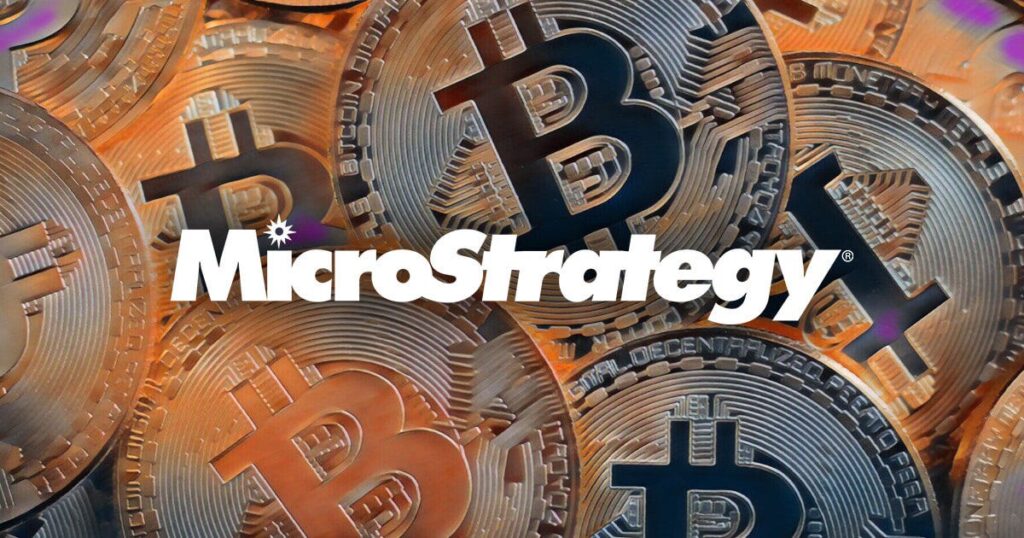Retail investors seeking exposure to Bitcoin’s volatility drove leveraged MicroStrategy ETFs to surpass $400 million in net assets.

Retail investors seeking exposure to Bitcoin’s volatility were the primary factor driving the increase in net assets of leveraged MicroStrategy ETFs, which surpassed $400 million.
In August, Defiance ETFs unveiled a leveraged MSTR ETF, and in September, rivals REX Shares and Tuttle Capital Management followed suit with even more turbo-charged versions. Eric Balchunas, an analyst at Bloomberg ETFs, referred to it as the “hot sauce arms race.”
Is MicroStrategy planning to lend Bitcoin for a yield?
Michael Saylor, the founder of MicroStrategy, transformed the company from a business intelligence company to a cryptocurrency hedge fund in 2020. He invested in Leveraged MicroStrategy ETFs to leverage the balance sheet and purchase Bitcoin.
The company’s commitment to increasing Bitcoin holdings per share for its shareholders is now reflected in the transfer of Leveraged MicroStrategy ETFs to “Bitcoin Yield” as a success metric.
This occurred on August 1, 2023, as it continued to explore methods to leverage its balance sheet further.
The company announced a $700 million debt offering on September 16 to utilize the funds to purchase additional Bitcoins. According to Benchmark analyst Mark Palmer, The company could begin lending out Bitcoin to generate additional yield.
Leveraged MicroStrategy ETFs Heat Up
The company has launched new exchange-traded funds (ETFs) designed to track its performance as part of its evolving Bitcoin strategy. On August 15, Defiance ETFs introduced the Defiance Daily Target 1.75X Long MSTR ETF, which offers 175% leveraged exposure.
On the other hand, REX Shares and Tuttle Capital Management introduced two ETFs on September 18: the T-REX 2X Long MSTR Daily Target ETF and the T-REX 2X Inverse MSTR Daily Target ETF, which are designed to target leveraged long and short positions, respectively.
These exchange-traded funds (ETFs) broaden the appeal of MSTR as a stock proxy for Bitcoin exposure to investors interested in leveraging its high volatility and performance in cryptocurrency markets.
According to Bloomberg ETF analyst Eric Balchunas’ tweet on September 27, the leveraged MicroStrategy ETFs have generated over $70 million in their inaugural week of trading.
Balchunas stated:
“Both of these coming out of the gate so hot indicates there’s some pretty strong demand for this type of high-octane, high-risk-high-reward investment.”
Leveraged exchange-traded funds (ETFs): High Risk, High Return
A leveraged exchange-traded fund (ETF) is an ETF that employs financial derivatives or debt to enhance the return of an underlying benchmark index, such as the S&P 500. Returns 2x or 3x the daily performance of the underlying are the most common objective.
This has the potential to generate substantial short-term profits; however, it also increases the likelihood of prospective losses. Still, it remains to be determined whether Leveraged MicroStrategy ETFs will achieve the anticipated level of success.
This is why conventional exchange-traded funds (ETFs) attempt to replicate an index on a 1:1 basis by investing in the underlying securities. The converse would be true for leveraged exchange-traded funds (ETFs) that employ borrowing or derivatives to attain a higher return ratio.
In simpler terms, the 2x leveraged ETF would possess a structure enabling it to generate twice the index’s daily return. In other terms, the ETF could increase by 2% if the S&P 500 increases by 1%.
An ETF is a significantly riskier investment than an index, as it can experience a 2% decline when the index decreases by 1%. This is particularly true for a longer-term holding due to the daily compounding effect.
